
All outbound tours to Turkey have been canceled due to the spread of a new coronavirus variant, the secretary of the Association of Iranian Airlines has announced. According to the Interior Ministry, and the National Headquarters for Coronavirus Control, tourist tours to Turkey have been canceled until further notice, IRNA quoted Maqsoud Asadi Samani as saying on Tuesday. However, flights between Iran and Turkey are operated on schedule, the official added. Earlier this week the official announced that there is no plan at present to suspend flights to and from Turkey. He added that airlines flying to Turkey will immediately halt the service if the National Headquarters for Coronavirus Control votes to its suspension. Considering the widespread of the mutated coronavirus in Turkey, it is necessary to halt, by the next 48 hours, traveling via land and air borders to and from Turkey for a week, Namaki stressed. “Iranian citizens who are in Turkey and intend to turn back to the country, as well as Turkish citizens who are in Iran, can leave the country observing the relevant protocols and doing PCR test to make sure no infection spreads,” he highlighted in the letter. For Iranians entering the country from land and air borders, quarantine is also required for suspicious or positive cases, he stated. On February 22, the spokesman of Iran's Customs Administration Rouhollah Latifi said Iran has closed five crossing points with Iraq to prevent the spread of the UK variant of coronavirus, ISNA reported. Flights between the two neighbors have repeatedly been suspended in recent months for the sake of coronavirus concerns though passengers are required to observe strict health protocols and hold a well-being certificate with a negative coronavirus PCR test result.
Create: Apr 10, 2021 Edit: Apr 10, 2021 Regional News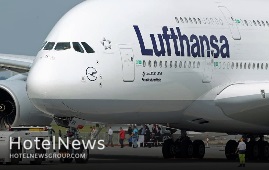
German airline Lufthansa announced on Friday that it would resume flights from Frankfurt to Tehran from April 16. Lufthansa had suspended flights in January 2020 after the Islamic Republic accidentally downed a Ukrainian jetliner amid an exchange of hostilities with U.S. forces in Iraqi soil. The airline said it has since assessed security measures by Iran with national and international authorities. “The conditions for safe flight operations in Iranian airspace are currently in place,” it said in an emailed statement, Reuters reported. In January 2020, however, the EU Aviation Safety Agency (EASA) approved that European airlines can return to parts of Iranian and Iraqi airspace. EASA announced, following an EU aviation security risk group meeting, that it was lifting temporary recommendations against overflying the two countries altogether. Lufthansa was among airlines that canceled flights over the affected airspace. On January 3, 2020, a U.S. drone strike assassinated top Iranian general Qassem Soleimani and in an act of retaliation, Iran fired missiles at U.S. targets in Iraq on January 8. The Ukrainian airliner was accidentally shot down by Iran’s air defense as it was on high alert in the tense aftermath.
Create: Apr 5, 2021 Edit: Apr 5, 2021 Regional News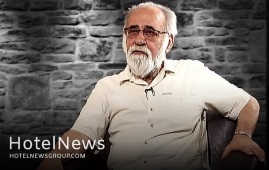
Mir-Abedin Kaboli, a celebrated Iranian archaeologist who took part in various excavations across the Iranian plateau, died on Thursday at the age of 76. Born in 1943 in Babol, northern Iran, Kaboli started his professional career at the general directorate of archeology in 1971 and since then he has participated in many archeological excavations in Haft Tappeh, Tapeh Abu Fandowa, and Shahdad, amongst some other sites, ISNA reported. Excavations at Shahdad, an ancient site in southeast Kerman province, was one of his most famed missions, which yielded jewelry from the 3rd millennium BC. An archaeological team, led by Kaboli, discovered the ruins of a developed ancient city with industrial and residential areas and a graveyard after fourteen stages of excavations in Shahdad. Kaboli was honored in 2016 as one of the greats of Iran's cultural heritage. He died of kidney failure in his hometown.
Create: Apr 3, 2021 Edit: Apr 3, 2021 Regional News
The Iranian Civil Aviation Organization of Iran on Monday announced all flights to the country from Iraq have been suspended for a week to curb the spread of a Covid-19 strain. The decision was made as a pre-emptive measure to protect the Iranian citizens against the variant which was first detected in Britain late last year. The Civil Aviation Organization in a statement announced that all flights of Iranian and Iraqi airlines from Iraq were suspended for one week effective as of Mar. 14 due to the UK COVID-19 variant, Mehr reported. Due to the outbreak of a new type of UK coronavirus and to observe necessary precautions and protect the health of citizens, effective measures have been taken in this regard, the statement added. Also, all domestic airlines are obliged to inform passengers of the case timely, the organization announced. Late in February, the CAO suspended all flights to and from 32 countries due to the latest decision of the National Headquarters for Coronavirus Control. The restrictions limited travels between the Islamic Republic and England, Angola, Bolivia, Botswana, Burundi, Cape Verde, Chile, Colombia, Democratic Republic of the Congo, Ecuador, Eswatini, French Guinea, Lesotho, Guyana, Malawi, Mauritania, Mauritania, Rwanda, Sicily, Suriname, Tanzania, Uruguay, Venezuela, and Zambia. For more than a year, the worldwide outbreak of COVID-19 has brought the world to a standstill, and tourism has been the worst affected of all major economic sectors. World tourist arrivals fell by 72% over the first ten months of 2020, according to data compiled by the World Tourism Organization (UNWTO) in December. Restrictions on travel, low consumer confidence, and a global struggle to contain the coronavirus pandemic are amongst factors contributing to the worst year on record in the history of tourism. Iran has also suffered the same fate as its foreign arrivals plunged 72% during the first eight months of 2020 when compared to 2019.
Create: Mar 16, 2021 Edit: Mar 16, 2021 Regional News
As you are well aware, medical tourism is booming worldwide as about 20 to 24 million people are traveling for medical treatments annually. Factors such as increased care needs over longer lifespans, rising healthcare costs, and constant pressures on some insurance industries are reasons behind why some opt to travel abroad. Regarding price competitiveness, Iran currently ranks first in the world but the country has not been very successful in attracting potential travelers as other competitors like Singapore and Turkey. People from the Persian Gulf littoral states, Iraq and Syria as well as Iranian expatriates residing in Canada and Germany constituted the majority of medical travelers to the Islamic Republic, who received plastic, cosmetics, open-heart, and orthopedic surgeries amongst other treatments over the past couple of years. A recent study co-authored by Iranian researchers Khalil Momeni, Ali Jannati, Rahim Khodayari-Zarnaq, Shabnam Ghasemyani, and Mohamadreza Havasian, suggests the main difference between Iran other countries they selected for the study lies in the organizational structure of the main stakeholders of the tourism industry; in other countries, this industry is organized and supervised by specific coordination bodies. Data were gathered from databases, including PubMed, Web of Knowledge, Scopus, Magiran, SID, and websites of the World Tourism Association, the Ministry of Tourism, and the Ministry of Health of the selected countries from 2000 to 2020. The study was published in the Melbourne-based Healthscope, which operates private hospitals, medical centers, and international pathology services. Six countries were selected purposefully, including Singapore, Turkey, Costa Rica, Jordan, United Arab Emirates, and Iran. They were compared in terms of the status of tourism and travel competitiveness, governance and policy-making status, the status of the medical tourism industry, and medical tourism infrastructure. In terms of tourism and travel competitiveness, Singapore, with a global rank of 17, was better than other countries. Based on the status of the medical tourism industry, Costa Rica ranked 7th in the world, and Singapore, the UAE (Dubai), Turkey, UAE (Abu Dhabi), Jordan, and Iran ranked 15, 22, 27, 31 35, and 41, respectively. In Iran, all indicators of medical tourism infrastructure were lower than those of other countries except for competitive prices. Comparative tables involved components, such as general profile, tourism and travel competitiveness, governance and policy, the status of the medical tourism industry, and medical tourism infrastructure in selected countries. The framework analysis based on the identified components was used to analyze the data. Furthermore, the study has confirmed that despite the legal framework for medical tourism development in Iran, this industry is currently facing several challenges. “These challenges are lack of specific medical tourism structure at the international, national, and regional levels, the lack of a medical tourism system, definition and formulation of laws, policies, and plans, the lack of infrastructure, and the lack of supervision system.” All of the indicators in tourism and travel competitiveness are low in Iran except pricing, which is ranked as the first cheapest country in the world. The growing medical tourism industry requires the optimal provision of all tourism infrastructures and not only the promotion of different indicators, the study suggests. Based on the report of the Medical Tourism Organization, the UAE, Turkey, and Jordan are the three most important destinations for medical tourism in West Asia. Even though Iran has good conditions in terms of competitive price, presence of skilled physicians, and low waiting time among the studied countries, but other medical tourism infrastructures are not enough invested. For example, until 2017, Iran has not been able to obtain a JCI license even for one hospital, and the average per capita physician/nurse index is much lower than the global one. To promote medical tourism, it is necessary to recognize the strategic medical tourism status of each province in the country, supply a specialized workforce, provide high-quality services, improve infrastructure, and promote a positive attitude of authorities to support the medical tourism industry. The study has also found that factors that can play a positive role in the development of medical tourism in Iran are advanced services for infertility treatment, cosmetic and dental surgery, organ transplantation and cell therapy, cultural similarity and familiarity with neighboring countries, and competitive prices. Measures, such as improving human resource communication skills and developing private hospitals following international standards, can also be effective in developing medical tourism. The main difference between the selected countries and Iran lies down in the organizational structure of the main stakeholders of the tourism industry. The study showed that one of the challenges for growing medical tourism in Iran is the presence of different organs of political and decision-making, as well as the cultural and political conditions. In all other countries, this industry is organized and supervised by specific coordination bodies. The revise of coordinating policies and strategies between various ministries, other government bodies, the private sector could help facilitate cross-sectoral coordination in this area. One of the important factors in the development of the medical tourism industry is the focus on attracting tourists from neighboring countries. Generally, certain populations are attracted more to certain locations. This might be due to a similar ethnic and cultural background. “To increase Iran’s ability to compete with countries in the region, such as Turkey, in attracting medical tourists, long-term plans should be developed to strengthen the infrastructure and cultural reforms, increase private sector participation and plan for the efficient use of mass media and local press for raising awareness. This requires a national effort and redefining the role of health tourism in the economy, as well as a strong trustee to follow up these measures,” the study suggests. According to the authors, the strengths points of the present study are the comprehensiveness of the selected countries and obtaining systematic information according to the appropriate strategy search. One of the limitations of the study is that in many items, the existing indicators are not updated, and some of the documents were in languages other than English and Persian. The Islamic Republic has set goals to exceed its yearly medical travelers to around two million in [calendar year] 1404 (March 2025-March 2026). Amongst Iran’s trump cards are the presence of credible surgeons and physicians, cutting-edge medical technologies, high-tech medicine and diverse specializations, super affordable procedures, and finally its hospitable people.
Create: Mar 13, 2021 Edit: Mar 13, 2021 Regional News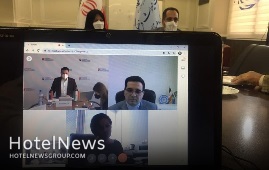
Iran and Slovakia on Thursday held an online meeting, in which high-level tourism officials, tour operators, and hoteliers discussed ways to boost tourism ties between the two countries in the post-coronavirus era. A key priority for Iran’s tourism sector is to restore tourism ties with previous markets and expand into new international markets such as Slovakia when the coronavirus crisis comes to an end, Mohammad Qasemi, the director for marketing and advertising at the tourism ministry said, IRNA reported. Regarding the unique characteristics and features of Iranian tourism as a different destination for the visitors from Slovakia, he emphasized the need for enhanced private sector relationships between the two countries to lead to the development of an efficient bilateral tourism exchange. Emphasizing the two countries’ capacity for caving, hydrotherapy, skiing, and national and natural parks, he also suggested that successful experiences be shared through training workshops and courses between the two sides. Elsewhere in his remarks, the Iranian official reminded the tremendous impact of the novel coronavirus pandemic on global tourism, adding that the Iranian government has provided support for travel businesses affected by the disease. The Slovak delegation also hailed the expansion of ties in the arenas of tourism and cultural heritage. Moreover, the Slovak Association of Tour Operators & Travel Agents (SACKA) expressed readiness to start bilateral tourism as soon as the virus is contained. The two centuries also agreed to draft a memorandum of understanding to lay the ground for further cooperation including fam tours for media personnel and tour operators. Last November, the World Tourism Organization announced that international tourist arrivals to Iran plunged 72% during the first eight months of 2020 when compared to 2019, highlighting the severe impact of COVID-19 as the main factor. Cultural Heritage, Tourism, and Handicrafts Minister Ali-Asghar Mounesan in October warned that Iran’s cultural heritage and tourism will be in a critical situation if the crises caused by the outbreak of the coronavirus continue. Last August, Mounesan said that Iran’s tourism has suffered a loss of 12 trillion rials (some $2.85 billion) since the outbreak of the coronavirus pandemic. He also noted that the coronavirus pandemic should not bring traveling to a complete standstill. “Corona is a fact, but can the virus stop tourism? Certainly not. For us, the coronavirus is a new experience in dealing with crises that teaches tourism experts around the world how to deal with such a disaster, and thankfully governments are turning this into an opportunity for better planning.” Optimistic forecasts, however, expect Iran to achieve a tourism boom after coronavirus contained, believing its impact would be temporary and short-lived for a country that ranked the third fastest-growing tourism destination in 2019. The latest available data show eight million tourists visited the Islamic Republic during the first ten months of the past Iranian calendar year (started March 21, 2019). Iran welcomed some 7.8 million foreign nationals a year earlier, achieving a 52.5 percent increase year on year. The ancient land embraces hundreds of historical sites such as bazaars, museums, mosques, bridges, bathhouses, madrasas, mausoleums, churches, towers, and mansions, of which 24 being inscribed on the UNESCO World Heritage list. Under the 2025 Tourism Vision Plan, the country aims to increase the number of tourist arrivals from 4.8 million in 2014 to 20 million in 2025.
Create: Mar 13, 2021 Edit: Mar 13, 2021 Regional News
Iran will set aside ten billion rials (some $240,000 at the official exchange rate of 42,000 rials per dollar) for the restoration of the Great Wall of Gorgan, Cultural Heritage, Tourism and Handicrafts Minister Ali-Asghar Mounesan said on Sunday. Situated in the city of Gorgan, the capital of northern Golestan province, the defensive wall is about 200 km in length, and it was built to prevent the invasion of the northern tribes. It is said to be the longest architectural work of ancient Iran, which was built in 90 years. “We will allocate one billion tomans (ten billion rials) of credit for the restoration of the Great Wall of Gorgan, so that with this credit, the measures for the restoration of this wall, along with aerial imaging and mapping, will be carried out as preliminaries for [the possible] UNESCO registration,” Mounesan said. The minister made the remarks in a meeting with provincial officials and cultural figures during his visit to the lush green province. Last December, Mounesan’s deputy for cultural heritage, Mohammad-Hassan Talebian, said: “Gaining a UNESCO tag for the Great Wall of Gorgan -- one of the longest brick barriers of the ancient world -- is not hard as it is comparable to the Great Wall of China in terms of age, function, and size.” Although there are some issues and obstacles, further efforts to preserve and restore the millennia-old wall could be an acceptable justification for UNESCO to add this structure to the World Heritage list, Talebian explained. To get to that point, complete and accurate mapping of the remnants of the wall is needed, for which a budget of 20 billion rials ($476,000 at the official rate of 42,000 rials) has been allocated so far official added. He also noted that if the mapping project comes to an end by the end of the current Iranian year 1399 (March 20, 2021), the inscription of the wall on the World Heritage list would be discussed and possibly approved by the end of the next summer. Also known as Red Wall, which in some ancient texts is referred to as the Red Snake, this wall is the longest brick ancient barrier between Central Europe and China, longer than Hadrian’s Wall and the Antonine Wall put together and the third-largest wall in the world after the walls of China and Germany. Most parts of the gigantic monument are still hidden underneath the surface through some segments that have so far been unearthed and even restored to former glory. Archaeological excavations have so far identified ditches, brick kilns, earthen dams, water canals, 38 forts, and watchtowers attached to the wall, and more than 25 castles in the southern margin of the wall as well as several ancient sites from prehistoric, historic, and Islamic eras. The gigantic barrier is also more than three times the length of the longest late Roman defensive wall built from scratch, the Anastasian Wall west of Constantinople. The combined area of the forts on the Gorgan Wall exceeds that of those on Hadrian’s Wall about threefold. According to UNESCO, the Gorgan Wall is remarkable not only in terms of its physical scale but even more so in terms of its technical sophistication. To enable construction works, canals had to be dug along the course of the defensive barrier to provide the water needed for brick production. These canals received their water from supplier canals, which bridged the Gorgan River via qanats. One of these, the Sadd-e Garkaz, survives to 700 m in length and 20 m in height but was originally almost one kilometer long. The Gorgan Wall and its associated ancient military monuments provide a unique testimony to the engineering skills and military organization of the Sassanian Empire. They help to explain its geographic extent, from Mesopotamia to the west of the Indian Subcontinent, and how effective border defense contributed to the Empire’s prosperity in the interior and its longevity. These monuments are, in terms of their scale, historical importance, and sophistication, of global significance. Golestan is reportedly embracing some 2,500 historical and natural sites, with UNESCO-registered Gonbad-e Qabus – a one-millennium-old brick tower – amongst its most famous.
Create: Mar 9, 2021 Edit: Mar 9, 2021 Regional News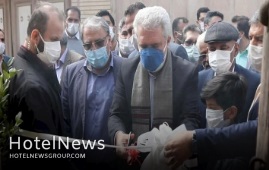
Cultural Heritage, Tourism, and Handicrafts Minister Ali-Asghar Mounesan inaugurated a hotel and two traditional guesthouses during his visit to the central city of Kashan on Tuesday. A budget of five trillion rials ($119 million at the official exchange rate of 42,000 rials per dollar) has been allocated for the establishment of the hotel, which is estimated to generate 120 job opportunities, CHTN reported. The total budget for traditional guesthouses also amounts to 170 billion rials ($4 million), the report added. The guesthouses are expected to create 40 new jobs as well. There is an additional 160 beds to the hospitality sector in the city with the inauguration of the accommodation centers. Kashan is a historical city near Isfahan in the central part of Iran. Its history dates back to over ten thousand years ago, and it is home to some of the most beautiful buildings featuring Islamic architecture. Many travelers opt to pass Kashan on their journeys between Tehran, Isfahan, Shiraz and Yazd, because this delightful oasis city on the edge of the Dasht-e Kavir, is one of Iran’s most alluring destinations. Kashan not only boasts a cluster of architectural wonders, an atmospheric covered bazaar, and a UNESCO-recognized garden, but it also offers some of central Iran’s best traditional hotels. The annual Golab-giri (rosewater distillation) ceremony of Kashan attracts huge crowds to the city every year. Some of the most ancient traces of civilization have been discovered near Kashan, at the Sialk archeological site.
Create: Mar 7, 2021 Edit: Mar 7, 2021 Regional News
Wyndham Hotels & Resorts (NYSE: WH) – the world’s largest hotel franchising company with over 8,900 hotels across nearly 95 countries and territories – announced today the first groundbreaking of its new La Quinta and Hawthorn Suites dual-brand hotel concept in Pflugerville, Texas. This marks the first-ever pairing of these two flags under the same roof and enables owners to target both the business transient and extended-stay demand within any given market. The company has 36 La Quinta and Hawthorn dual-branded hotels in its development pipeline in markets such as San Antonio and El Paso, Texas; Yuma, Ariz.; Wichita, Kan.; Charlotte, N.C. The property is slated to open in March 2022 with a combined 100 guestrooms – 30 of which will feature the recently updated Hawthorn room design that includes modern, well-equipped kitchens for extended-stay guests. This hotel will also feature the newly refreshed room design from La Quinta’s sought-after Del Sol prototype in 70 rooms. This new dual-brand hotel concept is designed to streamline development and operational costs. The concept includes a shared lobby, spacious modern great room, fitness center, bar, amenities, and back of the house all while appealing to the multiple types of travelers that have an affinity for these brands. The combination enhances Wyndham’s suite of offerings for developers by coupling its leading upper-midscale brand, La Quinta, with its benchmark, extended-stay Hawthorn Suites brand that reported a 44 percent year-over-year increase in domestic contract executions during 2020. Conveniently located at Pflugerville’s Stone Hill Town Center, just 15 miles northeast of Austin, the hotel provides easy access to the area’s more than 1,000 acres of scenic parks, trails and open spaces. The growing suburb of Pflugerville has seen significant business and residential growth, with a nearly 40 percent population increase in the past 10 years. We’re delighted to expand our portfolio with this new dual-branded hotel, providing these two distinct accommodations under one roof to meet the diverse needs of today’s travelers and provide operational efficiencies for developers,” said Krishna Paliwal, Wyndham’s president of La Quinta and head of architecture, design, and construction. “Our powerful marketing and sales programs for both La Quinta and Hawthorn will combine to drive reservations to this hotel. The industry-leading Wyndham Rewards program, now 86 million members strong, drives 46 percent of all U.S. hotel stays across our portfolio.” With La Quinta and Hawthorn Suites targeting different types of travelers, this brand pairing offers a unique opportunity to introduce a new subset of consumers to Wyndham’s strong upper-midscale and midscale portfolio. By bringing select-service and long-term lodging together under one roof, Wyndham is tapping into the steady and strong appetite developers and travelers have for extended-stay, especially in the midscale space which is expected to continue the high growth that it is seeing today.
Create: Mar 6, 2021 Edit: Mar 6, 2021 International News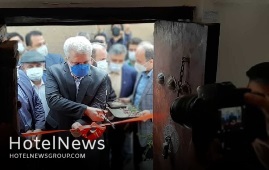
Cultural Heritage, Tourism, and Handicrafts Minister Ali-Asghar Mounesan inaugurated a hotel and two traditional guesthouses during his visit to the central city of Kashan on Tuesday. A budget of five trillion rials ($119 million at the official exchange rate of 42,000 rials per dollar) has been allocated for the establishment of the hotel, which is estimated to generate 120 job opportunities, CHTN reported. The total budget for traditional guesthouses also amounts to 170 billion rials ($4 million), the report added. The guesthouses are expected to create 40 new jobs as well. There is an additional 160 beds to the hospitality sector in the city with the inauguration of the accommodation centers. Kashan is a historical city near Isfahan in the central part of Iran. Its history dates back to over ten thousand years ago, and it is home to some of the most beautiful buildings featuring Islamic architecture. Many travelers opt to pass Kashan on their journeys between Tehran, Isfahan, Shiraz and Yazd, because this delightful oasis city on the edge of the Dasht-e Kavir, is one of Iran’s most alluring destinations. Kashan not only boasts a cluster of architectural wonders, an atmospheric covered bazaar, and a UNESCO-recognized garden, but it also offers some of central Iran’s best traditional hotels. The annual Golab-giri (rosewater distillation) ceremony of Kashan attracts huge crowds to the city every year. Some of the most ancient traces of civilization have been discovered near Kashan, at the Sialk archeological site.
Create: Mar 2, 2021 Edit: Mar 6, 2021 Regional News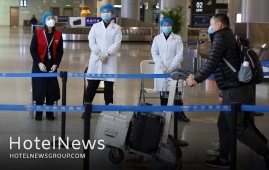
On Sunday, Mohammad Hassan Zibakhsh, the spokesman of Iran's Civil Aviation Organization (CAO), announced that all flights to and from 32 countries have been suspended due to the latest decision of the National Headquarters for Coronavirus Control, IRIB reported. The new restrictions also limit travels between the Islamic Republic and England, Angola, Bolivia, Botswana, Burundi, Cape Verde, Chile, Colombia, Democratic Republic of the Congo, Ecuador, Eswatini, French Guinea, Lesotho, Guyana, Malawi, Mauritania, Mauritania, Rwanda, Sicily, Suriname, Tanzania, Uruguay, Venezuela, and Zambia. Regarding the admission status of travelers from countries with special conditions, the official said: “For direct or indirect flights to Iran, passengers, who have stayed in one of the cited countries for more than four hours within a maximum of two weeks before the date of travel, will not be able to enter the Islamic Republic of Iran until further notice.” Earlier this month, Iran announced it would reduce the validity of negative COVID-19 PCR test results from 96 hours to 72 hours for inbound and outbound passengers. The new regulation replaced a role that required to bar passengers from boarding if they do not have a negative COVID test within 96 hours of departure. All passengers are subject to the medical screening on arrival, and if they are suspected of having the disease, non-Iranian nationalities will be quarantined at a place specified by the Health Ministry at their own expense and Iranian citizens will need to self-isolate for 14 days. The worldwide outbreak of COVID-19 has brought the world to a standstill, and tourism has been the worst affected of all major economic sectors. World tourist arrivals fell by 72% over the first ten months of 2020, according to data compiled by the World Tourism Organization (UNWTO) in December. Restrictions on travel, low consumer confidence, and a global struggle to contain the coronavirus pandemic are amongst factors contributing to the worst year on record in the history of tourism. Iran has also suffered the same fate as its foreign arrivals plunged 72% during the first eight months of 2020 when compared to 2019.
Create: Mar 2, 2021 Edit: Mar 2, 2021 Regional News
From the need for enhanced political engagement to developing relevant expertise, the World Tourism Organization, jointly with the Caribbean Tourism Organization, have united their Members in the Caribbean to address the key challenges they face in making effective use of statistics to drive the restart of their tourism sectors. Over the course of two days, a regional virtual workshop analysed the importance of tourism data for supporting the sector in the present and helping tourism to restart in the Caribbean in a timely and sustainable manner. The workshop brought together around 130 participants from 23 States, including the leaders of National Tourism Administrations, National Statistical Offices, Central Banks and Migration authorities. The high-level status of participants ensures that they will in turn spread UNWTO’s technical expertise within their own countries, empowering more tourism professionals with knowledge of how best to analyse and use data to guide decisions. Through the sessions, the Caribbean tourism community got a better understanding of the fundamentals of tourism statistics. They were also given an overview of UNWTO’s Tourism Satellite Account (TSA) data, as well as guidance on how this can be used to guide decision-making. Welcoming UNWTO’s technical assistance, Neil Walters, Acting Secretary General of the Caribbean Tourism Organization said: “We recognize the importance of data and statistics in the development of COVID-19 recovery programs and comprehensive sustainable tourism strategies. We thank the UNWTO for supporting our efforts at capacity building in tourism statistics analysis and reporting in the Caribbean.” The workshop also emphasized the relevance of tourism statistics, both for informing the sector’s response to the COVID-19 pandemic but also, looking ahead, for its role in guiding sustainable development across the Caribbean region. As with every other global region, the crisis has hit the Caribbean hard. According to the latest UNWTO data, Caribbean destinations experienced a 67% fall in international tourist arrivals in 2020 compared to the previous year. Given the reliance of many destinations on the sector, this has placed large numbers of livelihoods and businesses at risk and makes the timely restart of tourism vital.
Create: Feb 21, 2021 Edit: Feb 21, 2021 International News
